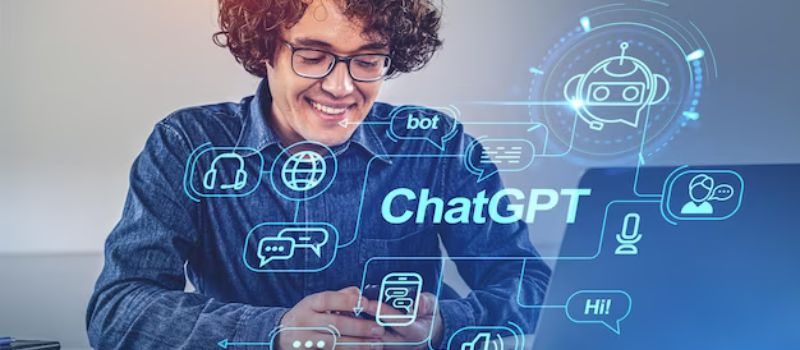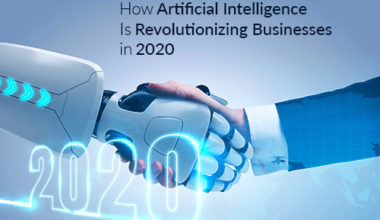GPT-4 is the most recent and advanced system developed by OpenAI, a research organization dedicated to developing artificial intelligence that will benefit humanity. GPT-4 can receive both text and image inputs and generate relevant, coherent, and innovative text outputs. It can also do complicated activities like problem-solving, essay writing, and music composition.
The creation of the GPT-4 (Generative Pretrained Transformer 4) model by OpenAI is one of the most significant developments in the field of natural language processing in recent years. GPT-4 is positioned to fundamentally alter how we interact with and produce human-like text thanks to its enormous scale and improved capabilities. In this blog post, we’ll examine GPT-4’s salient characteristics and conceivable uses, emphasizing its importance for NLP and other fields.
Improvements in GPT-4 Over GPT-3
The most recent version of the GPT series, GPT-4, is larger and more powerful than GPT-3. Compared to GPT-3’s 175 billion parameters, GPT-4’s startling 170 trillion parameters show greater accuracy and fluency in processing and producing text. GPT-4 is now capable of handling a larger spectrum of linguistic complexity thanks to this significant scale expansion, making it a flexible tool for a variety of applications.

Natural Language Proficiency
The ability of GPT-4 to understand and produce a wide range of natural language, spanning formal and informal styles, is one of its great capabilities. GPT-4 is a useful tool for assignments like language translation, text summarization, and question answering because of its adaptability. Additionally, the flexibility of GPT-4 to learn from many data sources enables fine-tuning for certain domains and applications, boosting its ability to adapt and perform well.
Image and Video Production with GPT-4
Beyond language processing, the Transformer architecture that underpins GPT-4 opens up exciting possibilities. The success of the same architecture in computer vision tasks has made it possible for GPT-4 to succeed in the creation of images and videos. GPT-4 has the potential to produce visual information that is imaginative and realistic by utilizing its extensive training and awareness of patterns.
Realizing GPT-4’s Applications
GPT-4 has a wide range of potential applications. Here are a few illustrations:
Language translation: GPT-4 is suited for machine translation applications because of its capacity to understand and produce natural language text, enabling precise and effective translations.
Text summarization: GPT-4 is useful for condensing lengthy documents, extracting important information, and giving succinct summaries because it is skilled at producing human-like prose.
Answering: GPT-4’s ability to deliver thorough explanations makes it an invaluable tool for applications like customer service or technical support, where precise and thorough responses are essential.
Image and video creation: GPT-4’s Transformer design gives it the ability to produce visual content, opening up possibilities for automatically producing high-quality images and videos with a creative flair.
Other uses: The versatility of GPT-4 extends to a range of natural language processing jobs, such as chatbots, automated news writing, and even creative writing, where it may help produce interesting and contextually appropriate content.
Improving Language Understanding
Thanks to its comprehensive contextual awareness, GPT-4 excels at catching the subtleties of language. The model is adept at tasks like sentiment analysis, language production, and text comprehension because it can comprehend the context of a conversation or a document. Because of its capacity for understanding linguistic nuance, it can provide more precise and contextually relevant solutions.
GPT-4’s Function in Content Creation
The process of creating content is time-consuming and demands both creativity and subject-matter knowledge. By automating some of the content creation processes, GPT-4’s potent language synthesis capabilities can ease the strain. GPT-4 can help in producing high-quality, captivating material that complies with specified standards, from blog posts to marketing copy. To ensure accuracy and uphold the appropriate tone and style, human oversight and editing are still essential.
GPT-4 for Virtual Assistants and Chatbots.
Virtual assistants and chatbots are now commonplace in customer service and service delivery. By offering more organic and contextually appropriate interactions, GPT-4 can improve these experiences. It is a priceless instrument for enhancing the effectiveness and efficiency of automated consumer encounters because of its capacity to comprehend user inquiries, offer precise solutions, and engage in lively dialogues.
Addressing Bias and Misinformation as Ethical Issues
It is crucial to think about the ethical implications of GPT-4, as with any powerful technology. The extensive training data for the model may unintentionally induce biases or spread false information. To guarantee fairness, accuracy, and ethical use, GPT-4 must continue to be improved and monitored by OpenAI and other developers. To reduce possible harm and assure ethical deployment, rigorous evaluation, and feedback loops are essential.
Challenges and Restrictions.
Despite being a huge advancement in natural language processing, GPT-4 still has issues and restrictions. The possibility of producing plausible but incorrect information is one significant worry. Enhancing the model’s fact-checking and verification skills will be necessary to mitigate this danger. Additionally, GPT-4’s resource-intensive training method and computing demands may present difficulties for smaller enterprises or those with limited resources.
The Evolution and Implications of GPT-4
The potential for GPT-4 is enormous as technology develops further. Its capabilities will probably be improved and expanded as a result of ongoing research and development, making it an even more useful tool for language-related activities. Beyond just a few industries, GPT-4 will have a significant impact on innovation, user experiences, and how we engage with content and information.
Ensuring Ethical and Beneficial Use in Responsible Deployment
GPT-4 must be deployed responsibly. To create rules and regulations that support openness, responsibility, and moral application of the technology, OpenAI, and other creators must work with stakeholders. To maximize the advantages of GPT-4 while reducing potential hazards, it’s critical to strike the correct balance between automation and human monitoring.
Accepting the Potential
GPT-4 is a remarkable advancement in natural language processing, providing previously unheard-of capacities for comprehending and producing prose that is human-like. Adopting this technology can open up new avenues for innovation across sectors. Businesses that use GPT-4 effectively can improve customer experiences, streamline operations, and gain fresh insights from massive amounts of text data.
Conclusion
GPT-4 is a game-changing technique that has the potential to transform natural language processing and other industries. It is a huge multimodal model capable of producing text and visuals with excellent precision and inventiveness. It can also tackle more difficult activities like problem-solving, essay writing, and music composition. Language translation, text summarization, image and video creation, content creation, virtual assistants, and chatbots are all possible applications for GPT
4.
GPT-4, on the other hand, presents obstacles and limits, such as creating erroneous or skewed information, necessitating massive computational resources, and raising ethical concerns. To ensure its fairness, accuracy, and ethical use, GPT-4 must be deployed properly, with human oversight and feedback loops. GPT-4 is a great achievement that has the potential to serve society in a variety of ways, but it must be carefully evaluated and improved to assure its safety and alignment.






